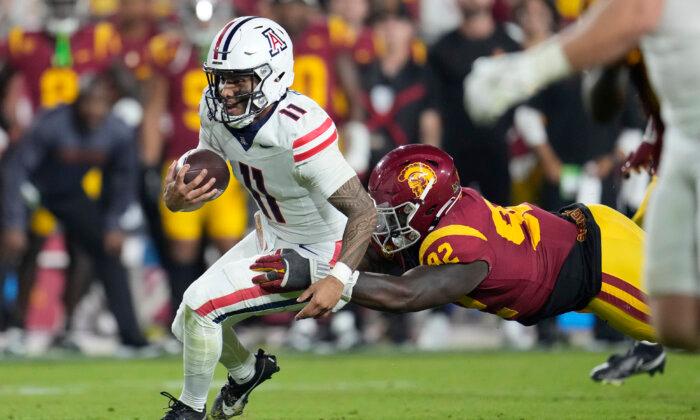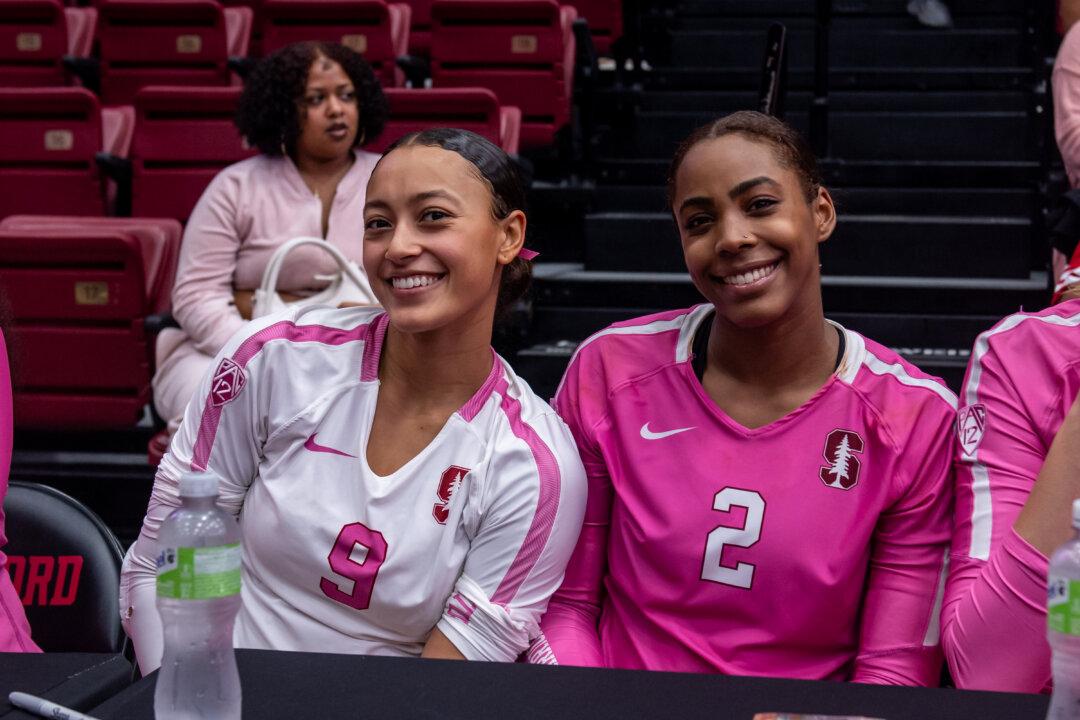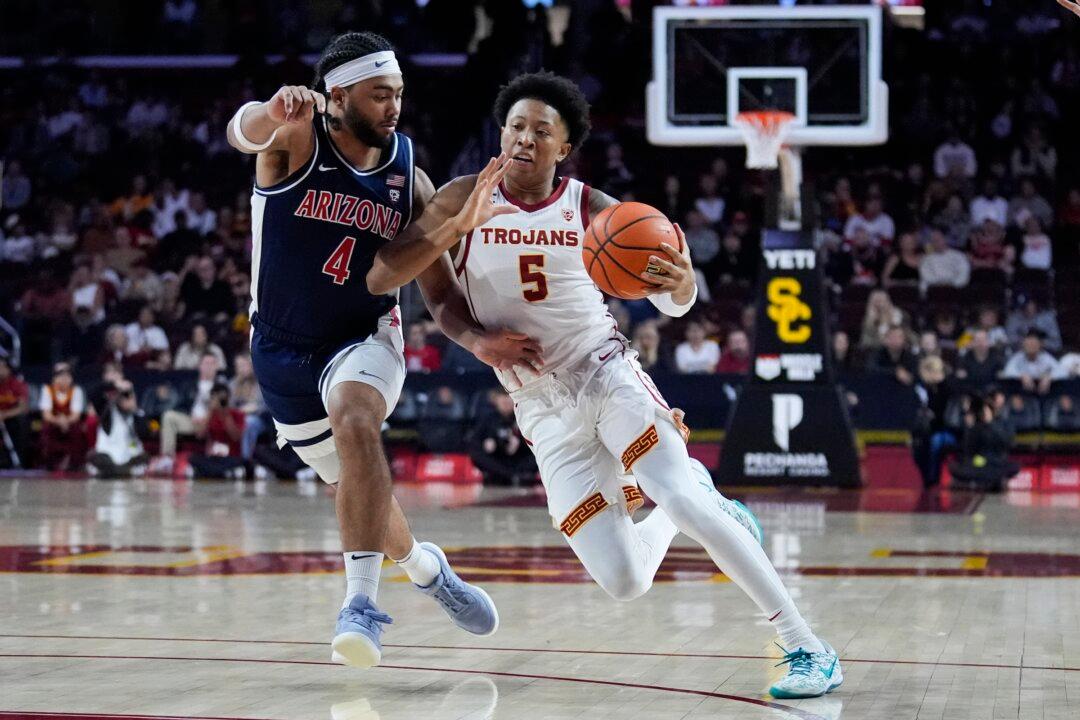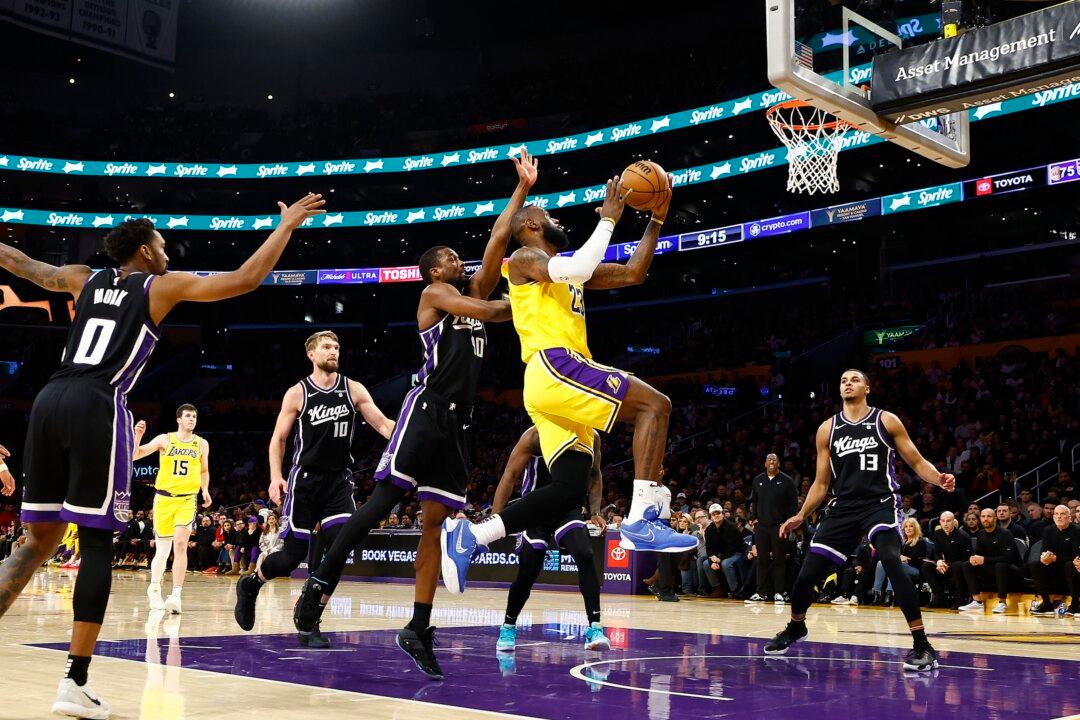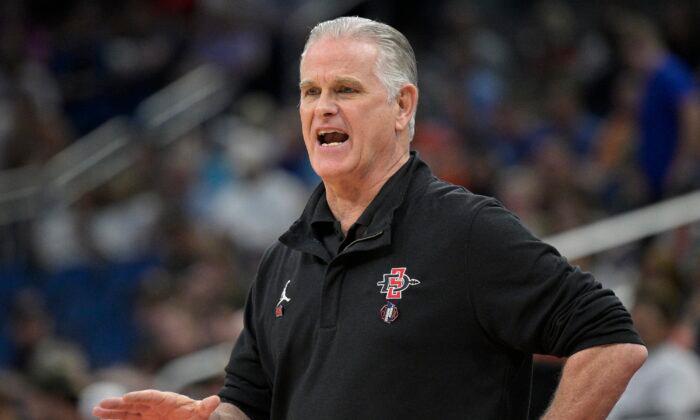On its last legs, the Pacific 12 Conference is throwing one heck of a going-away party.
In what stands to be the final season for a collegiate sports league that traces its roots to the founding of the Pacific Coast Conference in 1915, the Pac-12 is delivering by virtually all accounts its best brand of football ever.
Entering this weekend’s games, which include USC hosting two-time defending champion Utah and UCLA playing at Stanford, at least five conference teams remain very much in the running for the two berths in the Pac-12 Championship Game set for Dec. 1 in Las Vegas. A spot in the four-team College Football Playoff could also be at stake over the next six weeks.
In addition, the Pac-12 features a multitude of star players. Among them are quarterbacks Caleb Williams of USC, who won the Heisman Trophy last season, Washington’s Michael Penix Jr., who is most people’s odds-on Heisman favorite right now, and Oregon’s Bo Nix.
“I think it’s the most magnificent time this league has ever seen,” Pac-12 Network analyst Yogi Roth told The Epoch Times. “It’s heartbreaking that it’s going to end as we know it after this year.”

The curtain is set to drop, of course, because of the recent seismic shift in the college football landscape. Countless universities have seemingly haphazardly jumped from one conference to another, all in pursuit of increased television revenue.
“That’s the troubling thing for the fan bases because it should be about the student-athletes and the fans, but this has nothing to do with the student-athletes and the fans,” ESPN and Pac-12 Network play-by-play man Roxy Bernstein told The Epoch Times.
USC and UCLA, the Los Angeles-based flagship Pac-12 members for as long as anyone can remember, set the conference’s demise in motion in June 2022 when they announced plans to bolt for the Big Ten. And then in a span of just more than a week in July and August of this year, Oregon and Washington also joined the Big Ten, while Arizona, Arizona State, Colorado, and Utah jumped to the Big 12.
After weeks of uncertainty, California and Stanford gained acceptance from the Atlantic Coast Conference on Sept. 1, with all the new conference affiliations set to take effect next year. All of that will leave Oregon State and Washington State to presumably turn out the lights, and perhaps somehow salvage the Pac-12 brand.
“It’s incredibly sad,” former Washington All-American and Pro Bowl tackle Lincoln Kennedy told The Epoch Times. “Think about all the history. The conference is known as the Conference of Champions for all the national championships it has won. All that is gone. It’s like you’re throwing away the history books and starting all over. And you know that we as a country, if it’s out of sight, it’s out of mind. If you’re not talking about the Pac-12, it’ll be forgotten.”

If so, there is at least one more chapter to be written before the book is subjected to dusty library shelves.
USC, which suffered its first loss of the season, 48-20 last week at Notre Dame, and Washington are unbeaten in conference play. Oregon State, Oregon, and Utah have just one Pac-12 loss apiece, and those five schools have combined for a 28-4 overall record. All are ranked among the top 18 teams in this week’s Associated Press Top 25, while UCLA checks in at No. 25.
Even the bottom half of the league is commanding attention. Former NFL star Deion Sanders has remade the previously moribund Colorado program in his first season as coach, while Stanford, a seeming also-ran, overcame a 29-0 halftime deficit to stun the Buffaloes, 46-43 in double overtime, last week in Boulder.
“When you look at the depth and the balance in this conference, it’s hands-down the best league in the country. I don’t think anybody can argue that,” Mr. Bernstein said.
Often overshadowed by other conferences in previous years, the Pac-12 has flourished in part because of a couple of recent college football developments, according to Pac-12 Network analyst Nigel Burton, a former defensive back at Washington and head coach at Portland State.

The NCAA’s 2021 decision to allow college athletes to benefit financially from their name, image, and likeness is one factor. Another is the transfer portal, which has enabled student-athletes who might have been buried on depth charts elsewhere to switch schools without having to miss a season of playing time.
“There was a level of criticism about not seeing a lot of Pac-12 guys in the NFL draft last year,” Mr. Burton told The Epoch Times. “That really came from people who don’t know football, who didn’t pay attention to the fact that happened because so many of our high-level marquee players decided to come back this year. I really think that is a tribute to the great coaches we have, and the programs and environments they’re creating. Obviously, experience and all those things matter.”
While Mr. Burton remains “in denial” about the extinction of the Pac-12, Mr. Roth isn’t convinced that there might not yet be a happy ending, albeit probably not any too soon.
“Every campus I’ve been on, which has been pretty much every one since everything kind of shook out, there’s almost like an expectation that things are going to shift again in college football,” said Mr. Roth, a former wide receiver at the University of Pittsburgh and assistant coach at USC. “So, hopefully we get to see the formation of something along the lines of a West Coast league in the next five years or so. I don’t think it’s going to sit like this for the next 100 years.”
